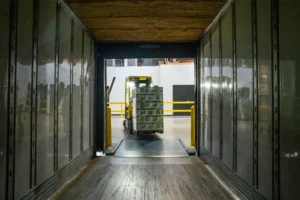The field of transportation analytics is rapidly evolving, driven by technological advancements and changing market demands. Here are the key trends to watch in 2025 and beyond.
Emerging Trends in Transportation Analytics
- AI and Machine Learning:
- AI and ML will play a more significant role in predictive analytics, route optimization, and decision-making.
- Internet of Things (IoT):
- IoT devices will provide real-time data on vehicle performance, traffic conditions, and shipment status, enhancing visibility and control.
- Blockchain Technology:
- Blockchain will improve transparency and security in supply chain transactions, reducing fraud and enhancing trust.
- Sustainability Analytics:
- Analytics tools will focus more on measuring and optimizing sustainability efforts, helping businesses meet regulatory requirements and corporate social responsibility goals.
- 5G Connectivity:
- The rollout of 5G will enable faster and more reliable communication between logistics systems, improving real-time tracking and coordination.
- Autonomous Vehicles:
- The adoption of autonomous vehicles will transform last-mile delivery and long-haul transportation, increasing efficiency and reducing labor costs.
- Big Data Analytics:
- Big data analytics will provide deeper insights into logistics operations, enabling more accurate forecasting and better decision-making.
- Augmented Reality (AR):
- AR will enhance warehouse operations by providing visual aids for picking and packing, improving accuracy and speed.
Preparing for the Future
- Invest in Technology:
- Businesses should invest in the latest transportation analytics technologies to stay competitive and improve efficiency.
- Focus on Sustainability:
- Incorporating sustainability analytics will become essential for meeting regulatory requirements and achieving corporate social responsibility goals.
- Enhance Data Quality:
- Ensuring high-quality data is crucial for the effectiveness of advanced analytics tools.
- Continuous Learning:
- Staying updated with the latest trends and technologies in transportation analytics will help businesses adapt and thrive.

Conclusion
The future of transportation analytics promises exciting advancements that will transform logistics operations. By balancing manual reviews with automated tools, implementing sustainable practices, optimizing delivery times, and staying ahead of emerging trends, businesses can achieve greater efficiency, cost savings, and customer satisfaction. Embracing these changes will ensure long-term success and competitiveness in the dynamic world of transport logistics.






